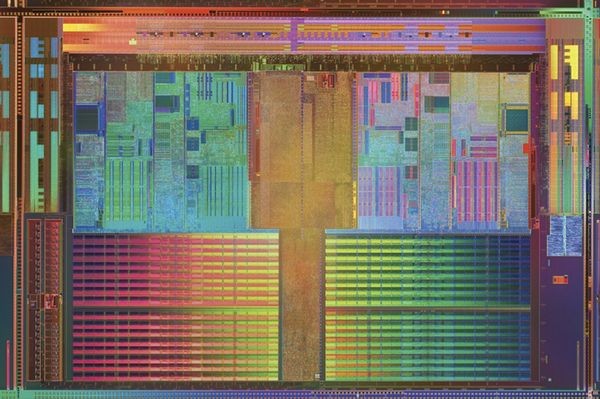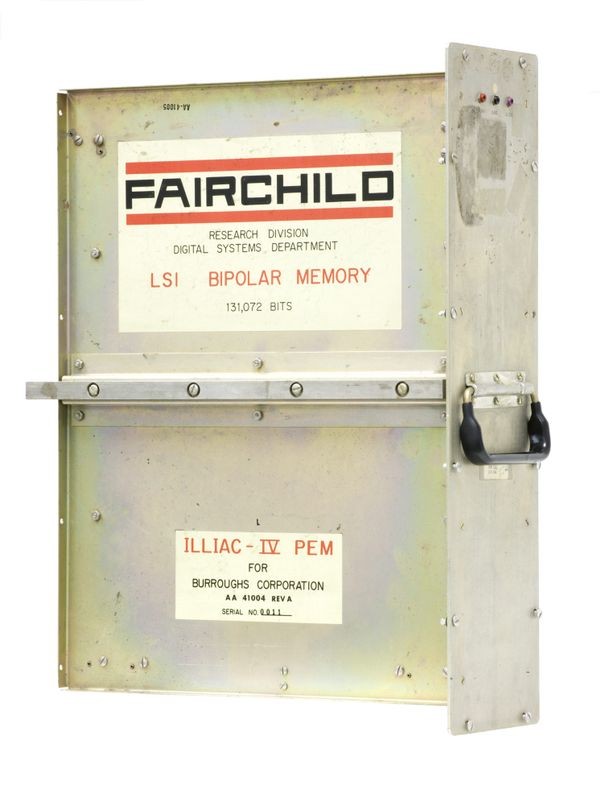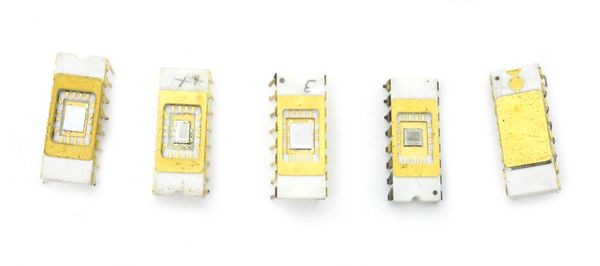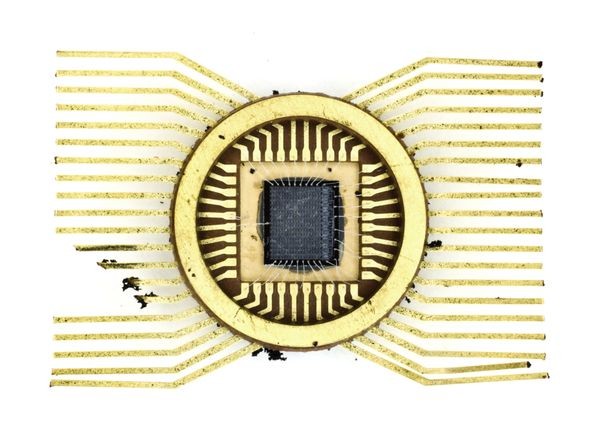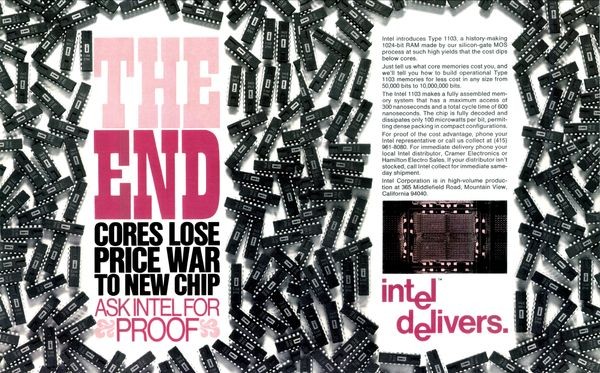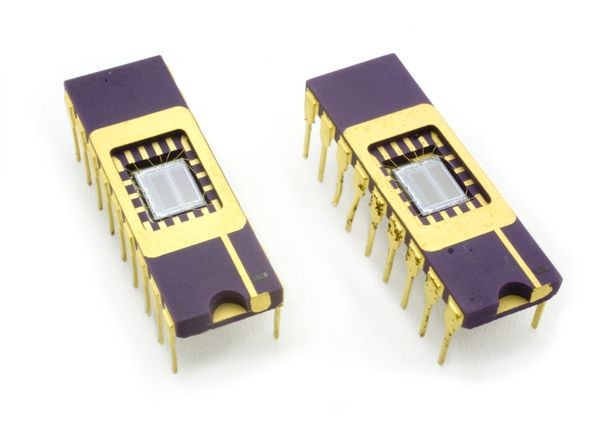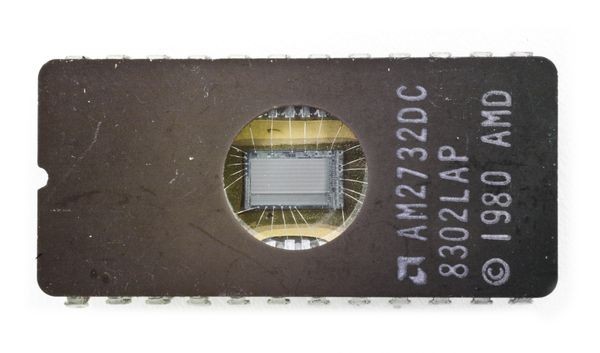Memory Integrated Circuits
Graphics engine HD 3800
Much of the die area of this ATI/AMD Mobility Radeon high-performance graphics engine chip is consumed by semiconductor memory.
Memory Integrated Circuits
A chain is only as strong as its weakest link. That principle applies to computer performance, too. As fast ICs replaced vacuum tubes and transistors for logic, slow magnetic core memory became a performance bottleneck.
Happily, ICs also offered the solution. Falling cost made them economical for memory applications.
By the early 1980s, semiconductors were the dominant memory type. And since memory cells can share the same chip with logic, new architectures such as microprocessors emerged. Much of the chip area of modern microprocessors and graphics engines holds memory, not logic.
Semiconductor Memory Integrated Circuits
In the mid-1960s, with capacities from 8 to 64-bits memory ICs were used only for high-speed, local scratchpad storage. Bipolar technology eventually allowed sizes from 128 to 1024-bits. In the 1970s, the metal-oxide-semiconductor (MOS) process’s higher density let semiconductors compete with magnetic core prices. By 2000, DRAM chips over 1,000 million-bits were available.
ILLIAC IV supercomputer processor element memory
ILLIAC IV was one of the first large scale computer projects to use semiconductor RAM for main memory.
View Artifact Detail256-bit Bipolar SRAM, Fairchild, 1971
The oxide-isolated bipolar process supported the speed needs of supercomputers.
View Artifact Detail288-bit CMOS SRAM, RCA, 1968
A very low-power CMOS (Complementary MOS) memory array developed for the U. S. Air Force.
View Artifact Detail256K-bit DRAM, Hitachi, 1985
A consortium of Japanese of manufacturers dominated production of 256K DRAMs.
View Artifact Detail16-bit SP95 Bipolar SRAM
IBM’s first semiconductor memory chip was used in the System/360 Model 95 mainframe supercomputer.
View Artifact Detail1103 DRAM advertisement
Intel successfully targeted its first commercial MOS DRAM at users of older magnetic core memories.
View Artifact Detail2048-bit MOS DRAM, AT&T Bell Labs, circa 1972
Within a year of their introduction, these 2K DRAMs were replaced by 4K chips.
View Artifact Detail32K-bit EPROM, AMD, 1980
Erasable, Programmable Read-Only-Memories (EPROM) retained data after power was removed.
View Artifact DetailRelated Content
Learn more about the development of semiconductor memory ICs
Semiconductor Read-Only-Memory chips appear
Semiconductor RAMs serve high-speed storage needs
Silicon Gate technology developed for ICs
Schottky-Barrier diode doubles the speed of TTL Memory & Logic
MOS Programmable ROM introduces iterative design
In the 1980s, Japan led the race to increase memory capacity
